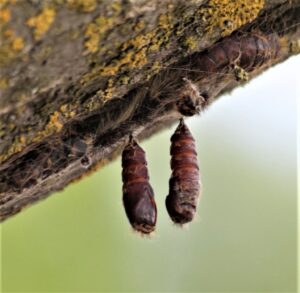August is Tree Check Month!
Protecting Canada’s Tree Health
Trees support Canada’s economy and the health of humans, wildlife, and the environment. Throughout August, people across Canada have the opportunity to support tree health in return by taking part in Tree Check Month. During the month, individuals are encouraged to survey trees in their yards, neighbourhoods and local parks for signs of invasive species. These invasive species, often insects and diseases, can devastate Canada’s forests and have major negative impacts on the environment as well as the economy.
Economic Impacts of Invasive Species
“Invasive species have a huge cost to the economy of Canada,” says Ron Neville, Plant Health Survey Biologist for the Canadian Food Inspection Agency. Ron gave tree-checking tips during a CFIA ‘Talking Plant Health’ podcast.
“For example, it’s estimated that every year about $7.5 billion is lost to the agriculture and forest industries because of invasive species. Invasive plants, insects and diseases kill or cause decline in forests, and can add increased costs for pest management programs at plant nurseries and farms across the country.”
These invasive species damage trees, leaving behind signs and symptoms that are easily identifiable, even without an expert eye. Ron Neville says that this time of year is the most ideal for spotting these signs.
“When trees are stressed because of pests or diseases, they will often start showing signs of the stress in the middle of the summer. When the weather is hot and we have drought or flood conditions, trees already affected by pests or diseases can decline much more quickly. For example, trees can start to lose leaves weeks before they usually would later in September.”
So How Do You Check Your Trees and What Are You Looking For?
Overall, what you want to keep an eye out for when inspecting trees is leaf browning or discolouration, bark cracking, thinning tree canopy, dead branches, insect holes, eggs and feeding activity. A good strategy for checking trees is to start at a broader scope first. Identify a tree you wish to check and note the overall health of the tree from far back. Is it healthy looking? Is the canopy full of leaves? Are the leaves changing colours earlier than others? Are there dead branches?

Spongy moth cocoons. Image: @iNaturalist, ©Reina Pearson
Once that’s done you can move closer and inspect individual leaves. Are they orange, black, or brown in spots? Has something been eating them? Finally, work your way down and around the trunk of the tree, looking for tiny exit holes, egg masses, cracks in the bark and frass. Frass is sawdust that larvae excrete when they feed on the plant tissue. If you see any of these signs, report to the Canadian Food Inspection Agency. And that’s it, you’ve successfully surveyed a tree for invasive pests! Put these skills to work this Tree Check Month!
Watch Out For These Invasive Pests This Summer
Some invasive forest pests and diseases to look out for this August that cause tree stress include spotted lanternfly, spongy moth, emerald ash borer, hemlock woolly adelgid, oak wilt, box tree moth, and Japanese beetle. If you find anything suspicious that you think could be evidence of invasive species damage, report it to the CFIA. Become a champion of plant health in your neck of the woods, and prevent the spread of invasive forest pests when you Buy Local, Burn Local firewood!